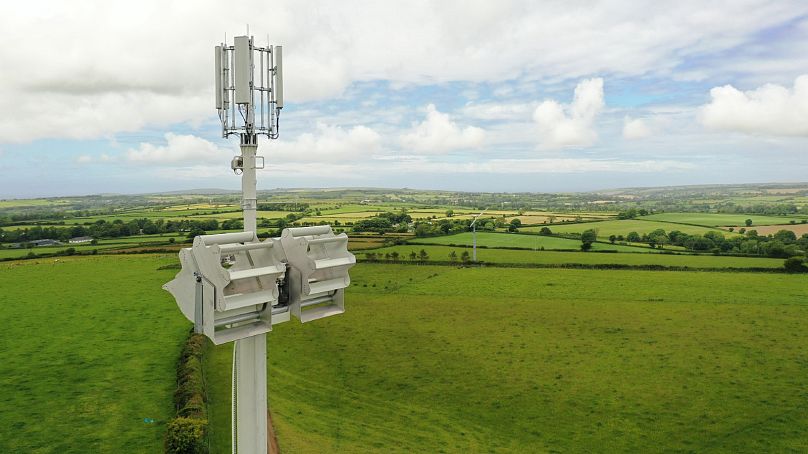Vodafone is trialling a wind and solar-powered mobile phone mast it hopes can help connect the UK's most remote areas.
Vodafone has switched on the UK's first self-powered mobile phone mast, to see if it could be the solution to provide coverage in remote areas while reducing the company's carbon footprint.
The mast, which has solar panels and a turbine to harvest the renewable power of the sun and the wind, is designed to function off the electricity grid, serving areas that have traditionally been difficult for mobile service providers to serve.
The two-year trial, conducted in the community of Eglwyswrw in Wales, aims to “ensure we can supply electricity to this site for the majority of the time,” said Suki Gilliland, Senior Energy Manager at Vodafone UK.
“The output of the trial will then be to understand what we need to do in terms of renewable electricity supply, renewable technology and other technology innovation to provide a fully off-grid solution,” she told Euronews Next.
The mast uses a wind turbine made by Crossflow Energy, which generates power even in light winds. It can be installed without needing to lay electricity cables, which Vodafone says reduces its impact on the local environment and its maintenance requirements.
The mast being tested in Eglwyswrw will be connected to the grid as a backup, to ensure the community continues to get its coverage, Gilliland said.
Before resorting to using power from the grid, however, it will first be powered by the turbine, and in times when there is no wind power, a battery charged with excess power will kick in.
Toward net zero
The company says these masts will help it reduce carbon emissions and reach its target of net-zero UK operations by 2027.
Vodafone hasn’t specified how many of the self-powered masts it plans to construct if the test is successful, but it says it could be part of the solution for achieving coverage across 95 per cent of the UK landmass, a government and industry goal.
The team will gather data over the two-year trial, and optimise the tech while determining which sites are most suitable for the masts, given the wind requirements for powering them.
Similar trials have started elsewhere in Europe, with Ericsson and Deutsche Telekom using wind and solar to power a 5G mobile site in Germany.
This is necessitated in part by soaring electricity costs, but these companies are also trying to find ways to secure reliable low-carbon energy for their energy-hungry sites.
"Energy costs for our sector are around $25 billion (€24 billion) per year, probably closer to $30 billion (€28.8 billion), at current energy prices," Mats Pellbäck Scharp, Ericsson's head of sustainability, told Reuters.
Ericsson said the 5-kilowatt wind turbine and solar modules could theoretically power the entire site of Dittenheim, around 193 km north of Munich in the state of Bavaria.
Twelve square metres of solar panels have already been operating for a year, supplying about 10 per cent of the required energy.




